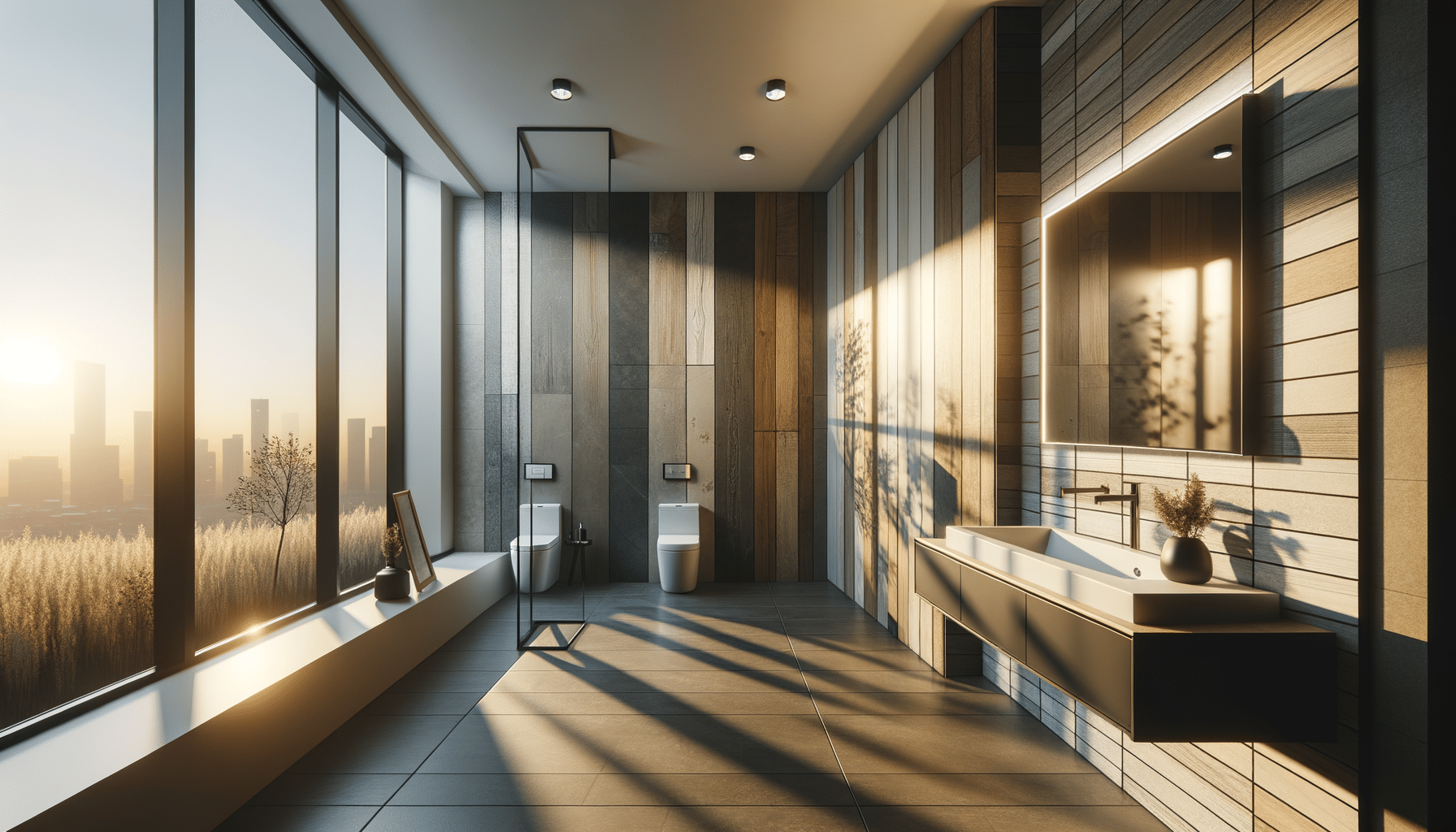
Guide to Bathroom Wall Panels: Styles, Materials, and Installation Tips
Understanding Different Types of Bathroom Wall Panels
Bathroom wall panels are an innovative solution for those looking to enhance the aesthetics and functionality of their bathrooms. These panels come in a variety of types, each offering unique benefits. The most common types include PVC, acrylic, and laminate panels.
PVC panels are a popular choice due to their affordability and ease of installation. They are lightweight and waterproof, making them ideal for wet environments like bathrooms. Acrylic panels, on the other hand, are known for their glossy finish and durability. Though slightly more expensive than PVC, they offer a sleek and modern look that can elevate any bathroom design.
Laminate panels are another excellent option, especially for those who desire a more natural wood or stone appearance without the cost or maintenance associated with these materials. Laminate panels are highly versatile, available in numerous designs and finishes, making them a favorite among homeowners looking for customization.
Each panel type has its pros and cons. PVC panels are cost-effective but may not offer the same luxurious feel as acrylic or laminate options. Acrylic panels, while stunning, may require more careful handling during installation to avoid scratches. Laminate panels provide aesthetic flexibility but can be susceptible to moisture damage if not properly sealed at the edges.
Design Inspiration for Your Bathroom
When it comes to bathroom design, wall panels can be a game-changer. They offer a clean, uniform look that tiles often can’t match, and with a variety of styles available, they can fit any design preference. For those inspired by the minimalist trend, sleek acrylic panels in neutral tones can create a serene and modern space. Pair them with minimalistic fixtures and natural lighting for a calming effect.
If you’re leaning towards a more rustic or traditional vibe, wood-effect laminate panels can bring warmth and texture to your bathroom. These panels mimic the appearance of real wood, offering a cozy and inviting atmosphere without the worry of water damage.
For a touch of luxury, consider marble or stone-effect panels. These can add a sophisticated feel to the bathroom, creating an elegant backdrop for your fixtures. Combine them with metallic accents and plush textiles to complete the look.
Don’t forget about color! Bold, colorful panels can make a statement and breathe life into an otherwise neutral space. Whether you opt for a single accent wall or a fully colored bathroom, the choice is yours. Remember, the key is to balance bold choices with classic elements to ensure the space feels cohesive and timeless.
Installation Tips for Bathroom Wall Panels
Installing bathroom wall panels can be a straightforward DIY project, but there are a few tips to ensure a smooth process. First, proper preparation is essential. Make sure the wall surface is clean, dry, and free of any debris. Any old wallpaper or paint should be removed to ensure the panels adhere correctly.
Next, measure the area accurately where the panels will be installed. It’s crucial to cut the panels to the correct size before starting the installation. Always use the appropriate tools, such as a fine-toothed saw for cutting, to avoid damaging the panels.
When applying adhesive, follow the manufacturer’s instructions. Use a high-quality adhesive suited for the panel material to ensure a strong bond. Start from one corner of the room, working your way across, pressing each panel firmly into place.
Seal the edges with a waterproof sealant to prevent moisture ingress. This step is particularly important for laminate panels, which can be prone to water damage if not sealed properly. Finally, allow the adhesive to cure fully before using the bathroom to ensure the panels are securely in place.
By following these installation tips, you can achieve a professional-looking finish that will last for years to come.
Caring for Your Bathroom Wall Panels
Once installed, maintaining bathroom wall panels is relatively easy compared to traditional tiles. Regular cleaning is essential to keep them looking fresh and new. For routine cleaning, a simple solution of mild soap and water will suffice. Use a soft cloth or sponge to wipe down the panels, avoiding abrasive materials that could scratch the surface.
For tougher stains or buildup, a non-abrasive bathroom cleaner can be used. Always check the manufacturer’s guidelines for recommended cleaning products to avoid damaging the panels. It’s also important to dry the panels thoroughly after cleaning to prevent water spots and maintain their finish.
Inspect the sealant regularly for any signs of wear or gaps. Resealing as needed will help prevent water from seeping behind the panels, which can lead to mold or damage. Additionally, ensure adequate ventilation in the bathroom to minimize moisture buildup, which can affect the longevity of the panels.
By incorporating these care tips into your cleaning routine, you can extend the life of your bathroom wall panels and keep them looking their best.
Conclusion: Enhancing Your Bathroom with Wall Panels
Bathroom wall panels offer a versatile and practical solution for modernizing your bathroom space. With a range of materials and designs to choose from, they cater to diverse tastes and preferences, allowing you to create a bathroom that reflects your style. Whether you opt for the affordability of PVC, the luxe appeal of acrylic, or the natural look of laminate, each type has something unique to offer.
By following the installation and care tips outlined in this guide, you can enjoy a beautiful and functional bathroom that stands the test of time. Remember, the key is to choose panels that complement your overall design vision while also considering practical aspects like maintenance and durability. With the right choices, your bathroom can become a sanctuary of comfort and style.


